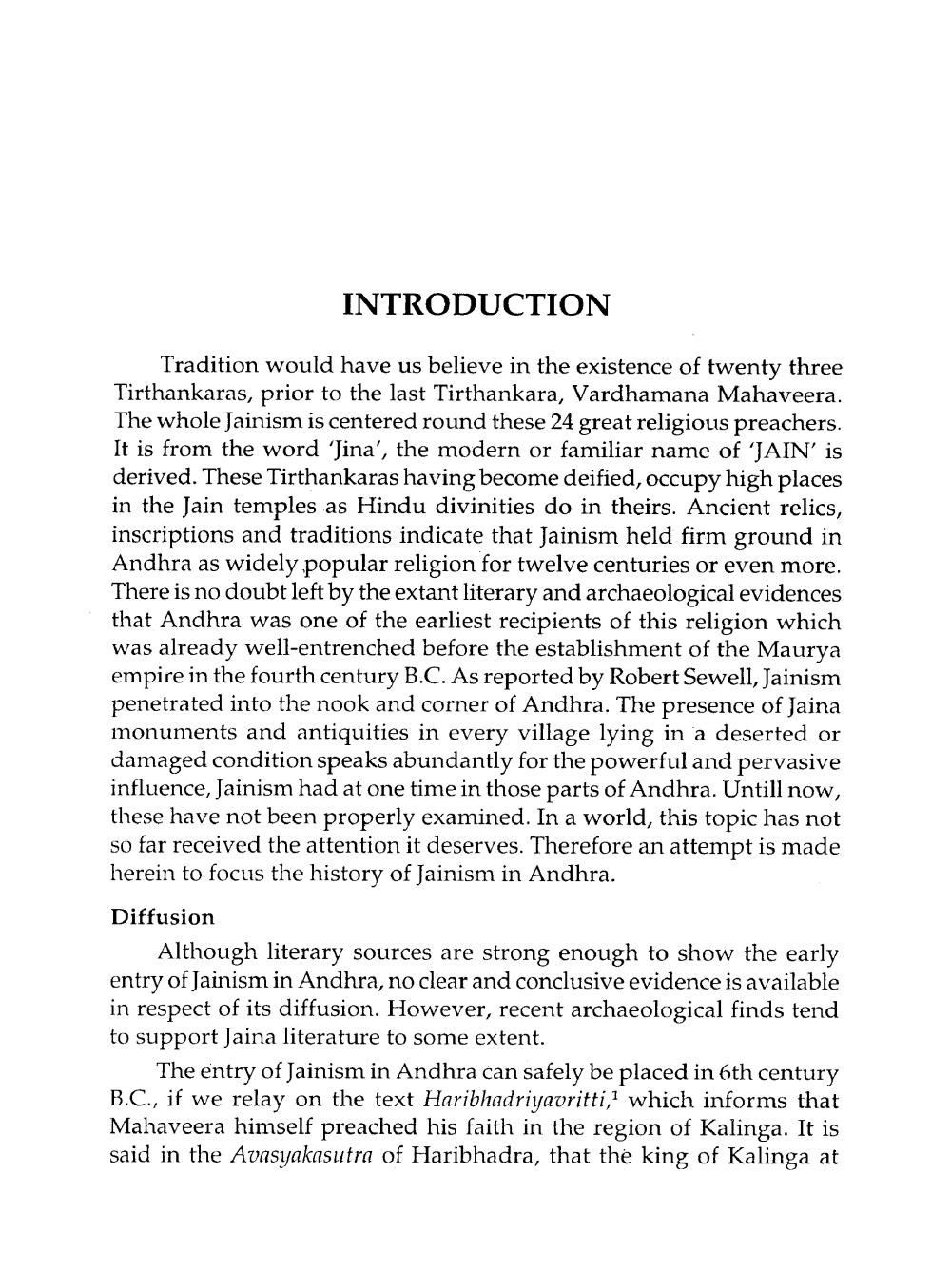________________
INTRODUCTION
Tradition would have us believe in the existence of twenty three Tirthankaras, prior to the last Tirthankara, Vardhamana Mahaveera. The whole Jainism is centered round these 24 great religious preachers. It is from the word 'Jina', the modern or familiar name of 'JAIN' is derived. These Tirthankaras having become deified, occupy high places in the Jain temples as Hindu divinities do in theirs. Ancient relics, inscriptions and traditions indicate that Jainism held firm ground in Andhra as widely popular religion for twelve centuries or even more. There is no doubt left by the extant literary and archaeological evidences that Andhra was one of the earliest recipients of this religion which was already well-entrenched before the establishment of the Maurya empire in the fourth century B.C. As reported by Robert Sewell, Jainism penetrated into the nook and corner of Andhra. The presence of Jaina monuments and antiquities in every village lying in a deserted or damaged condition speaks abundantly for the powerful and pervasive influence, Jainism had at one time in those parts of Andhra. Untill now, these have not been properly examined. In a world, this topic has not so far received the attention it deserves. Therefore an attempt is made herein to focus the history of Jainism in Andhra.
Diffusion
Although literary sources are strong enough to show the early entry of Jainism in Andhra, no clear and conclusive evidence is available in respect of its diffusion. However, recent archaeological finds tend to support Jaina literature to some extent.
The entry of Jainism in Andhra can safely be placed in 6th century B.C., if we relay on the text Haribhadriyavritti,' which informs that Mahaveera himself preached his faith in the region of Kalinga. It is said in the Avasyakasutra of Haribhadra, that the king of Kalinga at




